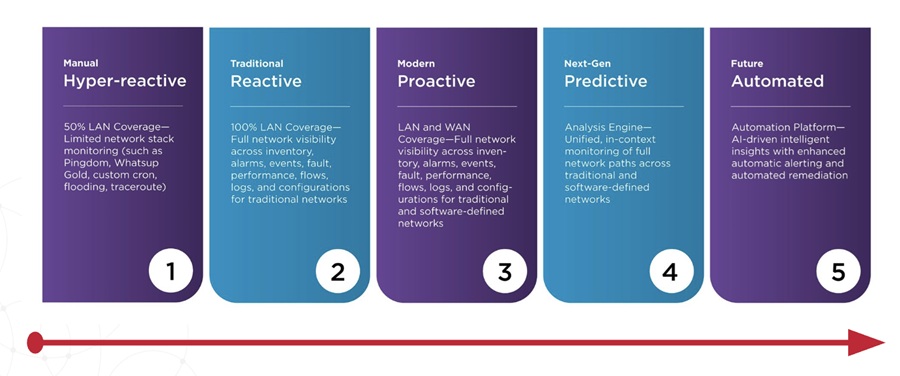
ScienceLogic announced the immediate availability of MapMyCloud.net, a free platform that runs on the Amazon Web Services (AWS) Cloud as an Amazon Machine Image (AMI) that allows enterprises to automatically map and visualize all of their AWS cloud resources and associated technology interdependencies.
Large enterprise organizations can accumulate many IT assets in the AWS Cloud so it’s virtually impossible to keep up with their spread and interdependencies across cloud environments. MapMyCloud is a simple and elegant way to visualize the full extent of the AWS resources and its impact on the entire IT infrastructure.
Features of MapMyCloud include:
- Intelligent Mapping – Cloud sprawl has been a side effect of cloud consumption. Storage and computing resources are typically spun out in the cloud in mass, only to be forgotten and continuously cost the organization money. For the first time, organizations will be able to “see” an entire cloud environment, allowing for the ability to disable rogue and unused resources.
- Reporting History – The inability to comprehend historical changes and the level of organizational dependence on the cloud can cause enterprise organizations to underestimate their planning and investment in the cloud. Because MapMyCloud.net allows clouds to be mapped as many times as the user requires, historical maps can be compared over a detailed timeline.
- Relationship Management – Interdependency views help avoid service and business disruption: Because MapMyCloud.net automatically maps out and provides the interdependencies and relationship of IT resources, enterprises can now easily see any of their AWS products and services that are actively being used and how they are dependent on each other.
MapMyCloud.net provides immediate visual understanding of cloud infrastructure, and supports a better plan for the future while avoiding pitfalls and unnecessary spending.
The Latest
According to Auvik's 2025 IT Trends Report, 60% of IT professionals feel at least moderately burned out on the job, with 43% stating that their workload is contributing to work stress. At the same time, many IT professionals are naming AI and machine learning as key areas they'd most like to upskill ...
Businesses that face downtime or outages risk financial and reputational damage, as well as reducing partner, shareholder, and customer trust. One of the major challenges that enterprises face is implementing a robust business continuity plan. What's the solution? The answer may lie in disaster recovery tactics such as truly immutable storage and regular disaster recovery testing ...
IT spending is expected to jump nearly 10% in 2025, and organizations are now facing pressure to manage costs without slowing down critical functions like observability. To meet the challenge, leaders are turning to smarter, more cost effective business strategies. Enter stage right: OpenTelemetry, the missing piece of the puzzle that is no longer just an option but rather a strategic advantage ...
Amidst the threat of cyberhacks and data breaches, companies install several security measures to keep their business safely afloat. These measures aim to protect businesses, employees, and crucial data. Yet, employees perceive them as burdensome. Frustrated with complex logins, slow access, and constant security checks, workers decide to completely bypass all security set-ups ...

In MEAN TIME TO INSIGHT Episode 13, Shamus McGillicuddy, VP of Research, Network Infrastructure and Operations, at EMA discusses hybrid multi-cloud networking strategy ...
In high-traffic environments, the sheer volume and unpredictable nature of network incidents can quickly overwhelm even the most skilled teams, hindering their ability to react swiftly and effectively, potentially impacting service availability and overall business performance. This is where closed-loop remediation comes into the picture: an IT management concept designed to address the escalating complexity of modern networks ...
In 2025, enterprise workflows are undergoing a seismic shift. Propelled by breakthroughs in generative AI (GenAI), large language models (LLMs), and natural language processing (NLP), a new paradigm is emerging — agentic AI. This technology is not just automating tasks; it's reimagining how organizations make decisions, engage customers, and operate at scale ...
In the early days of the cloud revolution, business leaders perceived cloud services as a means of sidelining IT organizations. IT was too slow, too expensive, or incapable of supporting new technologies. With a team of developers, line of business managers could deploy new applications and services in the cloud. IT has been fighting to retake control ever since. Today, IT is back in the driver's seat, according to new research by Enterprise Management Associates (EMA) ...
In today's fast-paced and increasingly complex network environments, Network Operations Centers (NOCs) are the backbone of ensuring continuous uptime, smooth service delivery, and rapid issue resolution. However, the challenges faced by NOC teams are only growing. In a recent study, 78% state network complexity has grown significantly over the last few years while 84% regularly learn about network issues from users. It is imperative we adopt a new approach to managing today's network experiences ...

From growing reliance on FinOps teams to the increasing attention on artificial intelligence (AI), and software licensing, the Flexera 2025 State of the Cloud Report digs into how organizations are improving cloud spend efficiency, while tackling the complexities of emerging technologies ...
